Coffee
What is Americano Coffee? Why You Should Try an Americano Today
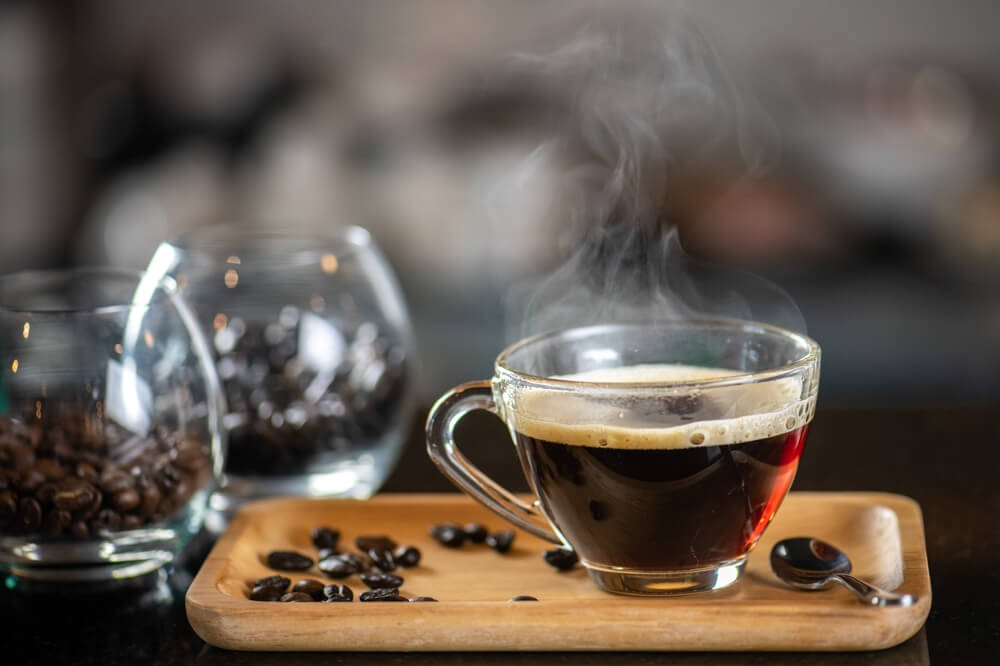
Americano coffee, often referred to as an “Americano,” is a popular coffee beverage that has its roots in World War II. The term “Americano” is derived from the way American soldiers preferred their espresso while stationed in Italy. To replicate the drip coffee they were accustomed to back home, they would dilute a shot of espresso with hot water, creating a milder flavor.
So, what is Americano coffee? Essentially, it consists of one or more shots of espresso combined with hot water. This mixture results in a drink that retains the rich taste and aromatic qualities of espresso but with a less intense flavor profile and lower caffeine concentration per ounce compared to straight espresso shots.
Understanding the Americano definition helps distinguish this drink from other coffee types. Unlike drip coffee, which involves brewing ground beans through a filter using gravity, an Americano starts with an espresso base made by forcing hot water through finely-ground coffee under high pressure. The addition of hot water transforms this concentrated shot into a smoother beverage that’s easier to sip and savor over time.
Americano coffee is an excellent choice for those who appreciate the robust flavors of espresso but prefer a less concentrated experience. It stands out among various coffee types for its unique preparation method and balanced taste profile.
The Origins of Americano Coffee
The history of Americano coffee is as rich and intriguing as the beverage itself. This popular coffee variant traces its origins back to World War II, a time when American soldiers were stationed in Europe. The story goes that these soldiers found the traditional European espresso too strong for their taste. To make it more palatable, they began diluting the espresso with hot water, creating a milder version that closely resembled the drip coffee they were accustomed to back home.
This adaptation quickly caught on and became known as “Caffè Americano,” or simply “Americano,” reflecting its American roots. The practice of adding hot water to espresso not only made the drink more familiar to American troops but also stretched their limited rations further during those challenging times.
The Americano has since evolved into a beloved coffee choice worldwide, appreciated for its versatility and smooth flavor profile. Its historical connection to American soldiers during WWII adds a layer of cultural significance, making it more than just a beverage, it’s a testament to adaptability and resilience in trying times.
How is an Americano Made? The Brewing Process Explained
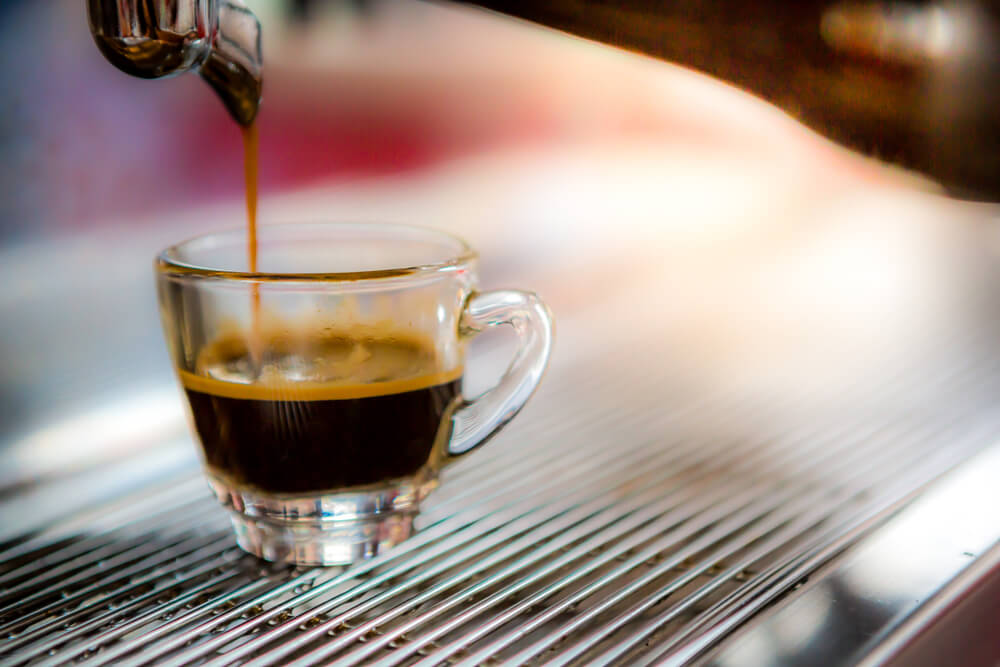
An Americano is a popular coffee beverage that offers a rich, robust flavor while being less intense than a straight espresso shot. Understanding the brewing process of an Americano can help you appreciate its unique taste and even prepare one at home with ease.
The first step in making an Americano involves pulling a shot of espresso. This is typically done using an espresso machine, where finely ground coffee beans are compacted into a portafilter and hot water is forced through the grounds under high pressure. The result is a concentrated coffee shot known for its strong flavor and aromatic profile.
Once you have your espresso shot ready, the next step is to dilute it with hot water. The traditional espresso-to-water ratio for an Americano ranges from 1:2 to 1:3, depending on personal preference. For instance, if you start with one ounce of espresso, you would add two to three ounces of hot water to achieve the desired strength.
Brewing techniques can vary slightly based on individual tastes or regional preferences. Some may choose to pour hot water into the cup first and then add the espresso shot on top. Others might prefer adding hot water directly into the freshly brewed espresso. Either method works well; it ultimately comes down to how you enjoy your Americano.
By understanding these key steps, you can master the art of making an Americano at home or simply gain more appreciation for this classic coffee drink when ordering at your favorite café.
Americano vs Other Coffee Drinks
When it comes to the world of coffee, the Americano often stands out as a unique option among other popular coffee drinks. Understanding the key differences and similarities between an Americano and other common coffee beverages can help you make more informed choices based on your taste preferences.
An Americano is made by diluting a shot of espresso with hot water, resulting in a drink that is similar in strength to drip coffee but with a distinct flavor profile. When comparing an Americano vs drip coffee, the primary difference lies in the brewing method. Drip coffee is brewed by passing hot water through ground coffee beans using a filter, which tends to produce a cleaner and less intense flavor compared to the robust and slightly bitter notes of an Americano.
In contrast, when examining an Americano vs espresso, it’s essential to note that both drinks start with the same base: a shot of espresso. However, while an espresso is served as-is in its concentrated form, an Americano’s addition of hot water creates a larger volume drink with less intensity but retains much of the rich character associated with espresso.
Other common coffee drinks like lattes and cappuccinos also begin with an espresso base but differ significantly due to their milk content. Lattes contain steamed milk and are topped with a small layer of foam, offering a creamy texture that softens the boldness of espresso. Cappuccinos have equal parts steamed milk and foam, providing both creaminess and frothiness.
Whether you’re comparing americano vs drip coffee or americano vs espresso, understanding these distinctions helps highlight each drink’s unique qualities while appreciating their shared origins within the diverse world of coffee beverages.
The Taste Profile of an Americano
An Americano is a popular coffee choice for those who enjoy a balanced and nuanced flavor profile. The flavor of an Americano can be described as rich and aromatic, offering a delightful blend of espresso’s intensity with the smoothness of added hot water. This combination results in a coffee that is less concentrated than a straight espresso but still retains its robust characteristics.
When discussing the tasting notes for Americanos, it’s essential to consider the beans’ origin and roast level. Typically, you can expect hints of chocolate, caramel, or even fruity undertones depending on the specific coffee beans used. The overall taste can vary from strong to mild based on how much water is added; more water will dilute the intensity, leading to a milder cup, while less water will preserve more of the espresso’s boldness.
In essence, an Americano offers a versatile coffee experience that caters to both strong and mild coffee taste preferences. Whether you prefer it intense or more subdued, each sip promises a satisfying journey through complex flavors and aromas.
Caffeine Content in an Americano
When it comes to understanding the caffeine content in an Americano, it’s essential to compare it with other popular coffee beverages. An Americano, typically made by diluting one or two shots of espresso with hot water, offers a distinct flavor profile and caffeine level.
To answer the question “How much caffeine is in an Americano?” we need to consider the standard serving size. A single shot of espresso contains approximately 63 milligrams of caffeine. Therefore, a typical double-shot Americano would have around 126 milligrams of caffeine.
Comparing these levels to other coffees provides a clearer picture. For instance, a standard 8-ounce cup of brewed coffee generally contains between 95 and 165 milligrams of caffeine, depending on the brewing method and coffee bean type. This places the caffeine content in an Americano somewhat in the middle range when compared to brewed coffee.
Additionally, other espresso-based drinks like lattes and cappuccinos also contain similar amounts of caffeine as they are made using one or two shots of espresso. However, since these beverages include milk or milk foam, their overall volume is larger than that of an Americano.
Understanding these comparisons helps coffee enthusiasts make informed choices about their daily caffeine intake based on personal preferences and sensitivity to caffeine levels.
The Best Ways to Enjoy Your Americano Coffee
The Americano, a classic coffee beverage, offers a versatile canvas for coffee enthusiasts to explore various flavors and experiences. If you’re wondering how to drink an Americano or looking for serving suggestions for Americanos, here are some of the best ways to enjoy this beloved drink.
First and foremost, the traditional method of drinking an Americano involves simply savoring its rich, robust flavor. Made by diluting a shot or two of espresso with hot water, an Americano provides a smooth yet potent coffee experience. For those who appreciate the pure taste of coffee without any frills, this straightforward approach is ideal.
However, customizing your Americano drink can elevate your coffee experience to new heights. One popular variation is adding milk or cream for a creamier texture and milder flavor. This option is perfect for those who find straight espresso too intense but still want to enjoy its depth.
Another way to enhance your Americano is by incorporating flavored syrups or sweeteners. Vanilla, caramel, or hazelnut syrups can add a delightful twist to the traditional recipe. Additionally, sprinkling cinnamon or cocoa powder on top can provide an extra layer of flavor that complements the rich taste of espresso.
For those who prefer iced beverages, an iced Americano offers a refreshing alternative. Simply pour the espresso over ice and add cold water instead of hot. This version maintains the boldness of an Americano while providing a cool and invigorating option for warmer days.
Finally, exploring different types of beans and roasts can significantly impact your Americano’s flavor profile. Experimenting with single-origin beans or various roast levels allows you to discover unique tastes and aromas that suit your preferences best.
In conclusion, enjoying an Americano coffee doesn’t have to be limited to one method. Whether you prefer it straight up or customized with milk, syrups, spices, or even served over ice, there are numerous ways to savor this versatile beverage according to your taste preferences.
Coffee
Different Types of Coffee (Finding Your Perfect Cup One Sip at a Time)
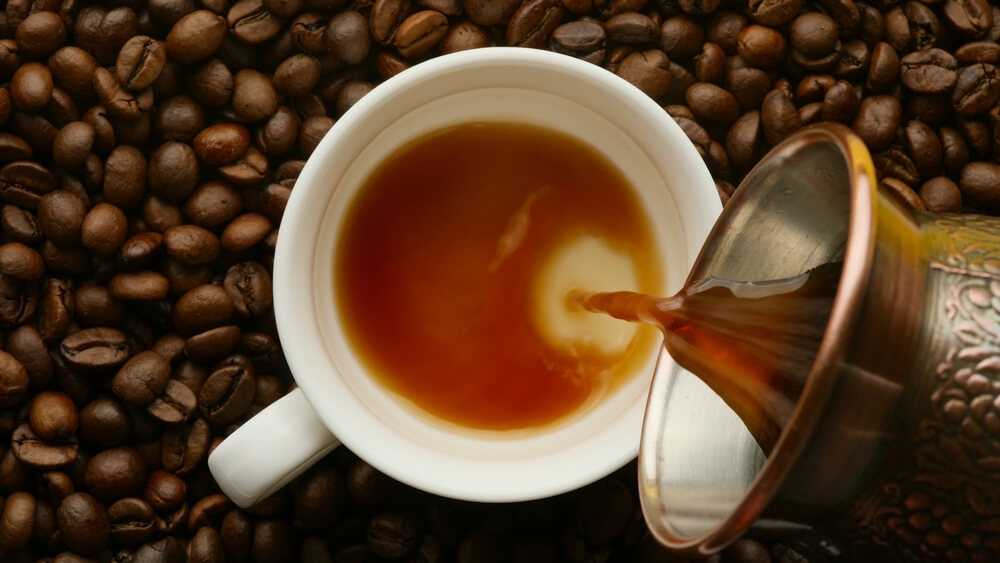
Exploring coffee varieties can be exhilarating for any coffee lover. This guide helps you find your ideal cup by exploring popular drinks, must-try specialties, and regional favorites. We’ll examine how brewing methods impact flavor and highlight differences between coffee beans.
Exploring the World of Coffee Varieties
When delving into the world of coffee, one quickly discovers an impressive array of coffee varieties that cater to diverse tastes and preferences. Understanding the different types of coffee can elevate your appreciation for this beloved beverage and help you make more informed choices.
One primary distinction among coffee varieties is between Arabica and Robusta beans. Arabica beans, known for their smooth, complex flavors and lower caffeine content, are often favored by specialty coffee enthusiasts. In contrast, Robusta beans have a stronger, more bitter taste with higher caffeine levels, making them popular in espresso blends.
Beyond the bean types, there are numerous methods to prepare coffee drinks. Espresso-based drinks form the foundation for many popular beverages. For instance, a classic espresso is a concentrated shot of rich coffee flavor. When steamed milk is added to espresso, it creates a latte or cappuccino both staples in many cafes around the world.
For those who prefer milder flavors or cold beverages, options like cold brew or iced coffee offer refreshing alternatives. Cold brew involves steeping coarsely ground beans in cold water for an extended period, resulting in a smooth and less acidic drink. On the other hand, iced coffee is brewed hot and then chilled over ice.
The Most Popular Coffee Drinks Explained

When you walk into a coffee shop, the array of choices can be overwhelming. Here’s a guide to some of the most popular coffee drinks, so you can make an informed decision next time you need your caffeine fix.
Espresso: The foundation for many coffee drinks, an espresso is a concentrated shot of coffee made by forcing hot water through finely-ground coffee beans. It’s known for its rich flavor and thick consistency.
Cappuccino: This classic Italian beverage consists of equal parts espresso, steamed milk, and milk foam. The result is a balanced drink with a creamy texture and robust flavor.
Latte: A latte is made with one shot of espresso and steamed milk, topped with a small amount of milk foam. It has more milk than a cappuccino, making it creamier and less intense in flavor.
Americano: An Americano is simply an espresso diluted with hot water. This creates a similar strength to drip coffee but retains the distinct flavors of espresso.
Macchiato: Traditionally, a macchiato is an espresso “stained” with just a dash of steamed milk or foam. It offers the strong taste of espresso with just a hint of creaminess.
Mocha: For those who enjoy chocolate as much as they do coffee, the mocha combines espresso with steamed milk and chocolate syrup or powder. It’s often topped with whipped cream for added indulgence.
Flat White: Originating from Australia or New Zealand (depending on who you ask), the flat white features one or two shots of espresso mixed with micro-foamed milk. It’s similar to a latte but has less foam and more velvety textured milk.
Understanding these popular options can enhance your appreciation for each drink’s unique qualities and help you find your perfect cup!
Specialty Coffees You Need to Try
If you’re a coffee enthusiast looking to expand your palate, specialty coffees offer a world of unique flavors and experiences. Here are some specialty coffees that you absolutely need to try:
Cold Brew: Unlike traditional iced coffee, cold brew is made by steeping coarsely ground coffee beans in cold water for an extended period, usually 12-24 hours. This method results in a smooth, less acidic beverage that’s perfect for hot summer days.
Nitro Coffee: For those who enjoy their coffee with a twist, nitro coffee is infused with nitrogen gas to create a creamy, stout-like texture. Served on tap and often enjoyed black or with minimal sweeteners, nitro coffee offers a velvety mouthfeel and rich flavor profile.
Affogato: A delightful Italian dessert-coffee hybrid, affogato consists of a scoop of vanilla gelato or ice cream “drowned” in a shot of hot espresso. The contrast between the cold dessert and the hot espresso creates an indulgent treat that’s hard to resist.
Cortado: Originating from Spain, the cortado is an equal blend of espresso and steamed milk. This balanced combination tempers the intensity of the espresso while still allowing its robust flavors to shine through. It’s perfect for those who prefer something stronger than a latte but smoother than straight espresso.
Red Eye Coffee: For those needing an extra caffeine kick, red eye coffee combines brewed drip coffee with one or more shots of espresso. This potent mix delivers both the full-bodied flavor of drip coffee and the concentrated punch of espresso a true wake-up call for any morning routine.
Each of these specialty coffees brings its own unique taste and experience to your cup. Whether you’re seeking something smooth like cold brew or adventurous like nitro coffee, there’s always something new to explore in the world of specialty brews.
Regional Coffee Specialties Around the World
When it comes to coffee, every region has its own unique take, reflecting local culture and traditions. Let’s explore some of the most fascinating regional coffee specialties around the world.
Turkish coffee is renowned for its rich flavor and thick consistency. Made by boiling finely ground coffee beans with water and sugar in a special pot called a cezve, Turkish coffee is often enjoyed slowly, allowing time for conversation and relaxation.
Italian espresso is perhaps one of the most iconic forms of coffee. Known for its strong flavor and quick preparation, espresso serves as the base for many other popular drinks like cappuccinos and lattes. In Italy, enjoying an espresso at a local café is more than just a caffeine fix; it’s a cherished daily ritual.
Vietnamese egg coffee offers a delightful twist on traditional brews. This creamy concoction combines robust Vietnamese coffee with whipped egg yolks and sweetened condensed milk, resulting in a rich, frothy beverage that’s both unique and delicious.
The Ethiopian buna ceremony is not just about drinking coffee but celebrating community and hospitality. Coffee beans are roasted over an open flame before being ground by hand. The resulting brew is typically enjoyed in multiple rounds, accompanied by snacks like popcorn or bread.
These regional specialties highlight how diverse and culturally significant the world of coffee truly is from the meticulous preparation methods to the communal experiences they foster.
Brew Methods and Their Impact on Flavor Profiles
When it comes to brewing coffee, the method you choose can significantly influence the flavor profile of your cup. Each brewing technique extracts different characteristics from the coffee beans, resulting in diverse taste experiences. Let’s explore some popular brew methods and their impact on flavor profiles.
The French press is known for its full-bodied and rich flavors. This immersion method allows coffee grounds to steep in hot water before being separated by a metal mesh filter. The result is a robust cup with pronounced oils and sediments, offering a heavier mouthfeel.
In contrast, the pour-over method produces a cleaner and more nuanced cup of coffee. By manually pouring hot water over coffee grounds in a cone-shaped filter, this technique emphasizes clarity and brightness in the flavors. It’s perfect for highlighting subtle notes and complexities within single-origin beans.
The AeroPress combines elements of both immersion and pressure brewing. Coffee grounds are steeped briefly before being forced through a paper or metal filter using air pressure. This versatile method can produce anything from espresso-like shots to smooth Americanos, depending on grind size and brew time.
For those who prefer convenience without sacrificing quality, the drip brewing method is an excellent choice. Automatic drip machines use gravity to pull hot water through ground coffee contained in a paper filter. This results in a balanced cup with moderate body and acidity, making it suitable for everyday drinking.
Lastly, the siphon brewing method offers both visual appeal and exceptional flavor clarity. Using vapor pressure to push water into an upper chamber where it mixes with coffee grounds before filtering back down as brewed coffee, this technique yields an aromatic and clean-tasting cup that showcases intricate flavor notes.
Each of these methods has its unique impact on the final flavor profile of your coffee. Understanding these differences can help you choose the right brew for your taste preferences or experiment with various techniques to discover new dimensions of flavor.
Coffee Beans and Their Differences
When it comes to coffee beans, understanding the differences between Arabica, Robusta, Liberica, and Excelsa can significantly enhance your coffee experience. Each type offers unique characteristics that cater to various taste preferences and brewing methods.
Arabica Beans Characteristics
Arabica beans are renowned for their smooth and complex flavor profile. They tend to have a sweet taste with hints of fruit and berries. Grown primarily in high-altitude regions with ample rainfall, Arabica beans are more susceptible to pests and diseases but reward growers with a superior quality bean. They also contain less caffeine compared to other varieties, contributing to their mild flavor.
Robusta Beans Characteristics
Robusta beans are known for their strong, bold flavor with a slightly bitter aftertaste. These beans have higher caffeine content than Arabica, which makes them more resilient against pests and diseases. Robusta is often used in espresso blends due to its rich crema-producing properties. The plants thrive in lower altitudes and warmer climates, making them easier to cultivate on a larger scale.
Liberica Beans Characteristics
Liberica beans offer a distinctive taste that sets them apart from the more common Arabica or Robusta varieties. Known for their unique floral and fruity aroma combined with woody or smoky undertones, Liberica can be an acquired taste for some coffee enthusiasts. These beans are larger than both Arabica and Robusta and have an irregular shape. They grow well in hot climates typical of Southeast Asia.
Excelsa Beans Characteristics
Excelsa beans are actually a variety of Liberica but possess distinct characteristics that merit separate recognition. They contribute depth and complexity when blended with other coffee types due to their tart, fruity notes coupled with dark roasted flavors reminiscent of roasted nuts or chocolate. Excelsa grows predominantly in Southeast Asia at medium altitudes.
Each type of coffee bean brings its own unique set of characteristics that appeal differently depending on personal preferences for flavor profiles and brewing methods. Understanding these differences can help you select the perfect bean for your next cup of coffee.
Coffee
Everything You Need to Know About Breve Coffee
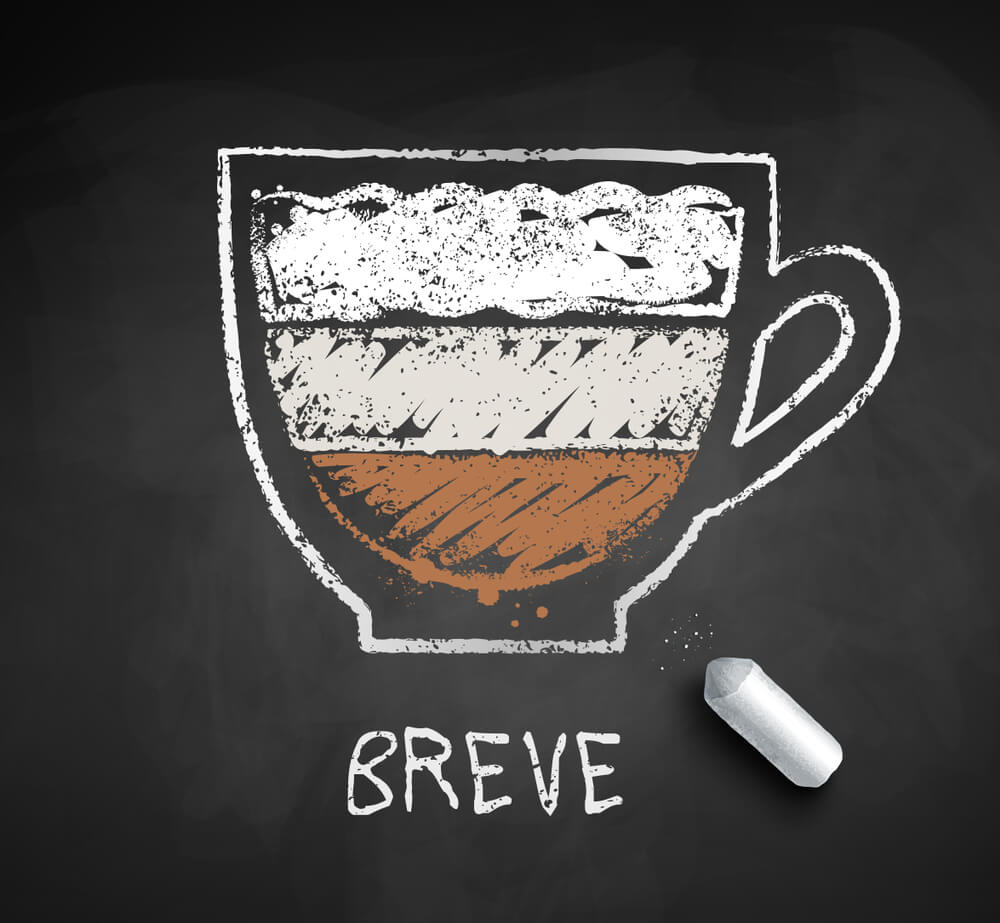
Breve coffee, a creamy espresso drink using half-and-half instead of milk, has captivated coffee enthusiasts worldwide. This guide covers its American origins, rising popularity, crafting steps, and differences between breves and lattes. It also explores the health benefits and considerations. Whether you’re a seasoned barista or newcomer, this overview will deepen your appreciation for breve coffee’s unique charm.
What is Breve Coffee?
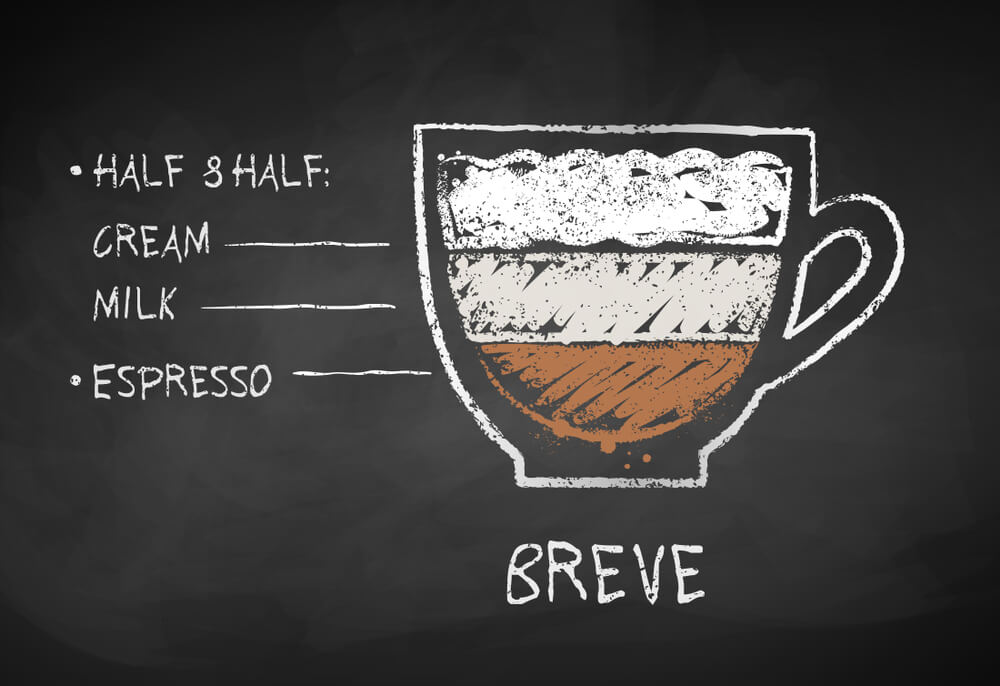
Breve coffee, often referred to as a breve latte, is a rich and creamy espresso drink that stands out for its unique texture and flavor profile. But what exactly is breve? The term “breve” comes from the Italian word for “short,” but in the context of coffee, it refers to an indulgent beverage made with half-and-half instead of regular milk.
The preparation of a breve coffee involves pulling a shot or two of espresso and then adding steamed half-and-half. This combination results in a richer, creamier drink compared to traditional lattes, which use whole or skim milk. The higher fat content in the half-and-half gives the breve its signature velvety texture and luxurious mouthfeel.
For those who enjoy their coffee on the indulgent side, the breve offers an excellent alternative to standard espresso drinks. Its creamy consistency makes it particularly appealing during colder months or as an occasional treat. Whether you’re already a fan or just curious about trying something new, understanding what goes into making a breve coffee can enhance your appreciation for this delightful beverage.
The Origins of Breve Coffee and Its Popularity
Breve coffee, a rich and creamy espresso-based drink, has an intriguing history that adds to its allure. The origins of breve coffee can be traced back to the United States, where it emerged as a delightful twist on the traditional Italian cappuccino. Unlike its Italian counterpart, which uses steamed milk, breve coffee incorporates steamed half-and-half or cream, resulting in a velvety texture and a richer flavor profile.
The history of breve coffee is relatively recent compared to other classic espresso drinks. It began gaining traction in the latter half of the 20th century as American coffee culture started to evolve and experiment with different ingredients and techniques. This innovation led to the creation of what we now know as breve coffee, a luxurious beverage that quickly captivated the taste buds of many.
The popularity of breve coffee has soared over the years, especially among those who appreciate indulgent flavors and textures in their cup. Its unique composition sets it apart from other espresso drinks, making it a favorite choice for both casual drinkers and connoisseurs alike. As more people discover its creamy richness, breve coffee continues to carve out its niche in cafes around the world.
While breve coffee may not have centuries-old roots like some beverages, its origin story is a testament to creativity and adaptation within modern coffee culture. Its growing popularity underscores its appeal as a decadent alternative for those seeking something beyond the ordinary cup of joe.
How to Make a Perfect Breve Coffee at Home
Breve coffee, a rich and creamy espresso-based drink, is a delightful treat that can easily be made at home. Here’s how to craft the perfect breve coffee with just a few simple ingredients and steps.
Ingredients for Breve Coffee
To create this luxurious beverage, you will need:
– Freshly brewed espresso (1-2 shots)
– Half-and-half (approximately 4 ounces)
– Sweetener of choice (optional)
Step-by-Step Breve Recipe
1. Brew the Espresso: Start by brewing 1-2 shots of your favorite espresso. For the best results, use freshly ground beans and an espresso machine or stovetop Moka pot.
2. Heat the Half-and-Half: Pour about 4 ounces of half-and-half into a small saucepan or milk frother. Heat it gently on the stove until it reaches around 150°F (65°C). If using a milk frother, simply follow the device’s instructions for heating.
3. Froth the Half-and-Half: Once heated, froth the half-and-half until it becomes thick and creamy. You can use a handheld milk frother or whisk vigorously if you don’t have one.
4. Combine and Enjoy: Pour your freshly brewed espresso into a cup, then slowly add the frothed half-and-half on top. Stir gently if desired to combine flavors evenly.
5. Sweeten to Taste: Add sweetener if desired, though many prefer their breve coffee unsweetened to fully appreciate its natural creaminess.
By following these simple steps on how to make a breve at home, you can enjoy this indulgent coffeehouse favorite anytime without leaving your kitchen!
Breve vs Latte (Understanding the Key Differences)
When it comes to choosing between a breve and a latte, understanding their key differences can help you make the best choice for your coffee preferences. Both beverages are espresso-based, but the type of dairy used sets them apart significantly.
A latte is made with steamed milk and a small amount of foam on top. Typically, it consists of one or two shots of espresso mixed with a larger proportion of steamed milk, resulting in a creamy and smooth texture. The milk’s natural sweetness complements the bold flavor of the espresso, making it a popular choice for those who enjoy a balanced coffee experience.
On the other hand, a breve uses half-and-half instead of milk. Half-and-half is a mixture of equal parts whole milk and heavy cream, which gives the breve its rich and velvety consistency. This substitution results in a thicker and more indulgent drink compared to the lighter texture of a latte. The higher fat content in half-and-half also enhances the overall flavor profile, providing an extra layer of richness that some coffee enthusiasts find irresistible.
When comparing breve vs latte options: if you prefer your coffee to be lighter and smoother with subtle sweetness from steamed milk, then go for a latte. However, if you’re looking for something richer and more decadent with half-and-half’s luxurious texture, then opting for a breve might be your best bet. Whether you choose one over the other depends on your taste preferences and how indulgent you want your coffee experience to be.
The Health Benefits and Considerations of Drinking Breve Coffee
Breve coffee, a rich and creamy espresso-based drink made with half-and-half instead of milk, offers a unique experience for coffee enthusiasts. When considering the health benefits of breve coffee, it’s essential to look at both the advantages and potential drawbacks.
One of the primary health benefits of breve coffee is its higher fat content compared to traditional milk-based coffees. The half-and-half used in breve contains healthy fats that can provide sustained energy and help keep you feeling fuller for longer periods. These fats are also essential for absorbing fat-soluble vitamins such as A, D, E, and K.
However, it’s important to consider the half-and-half health effects as well. While it does offer nutritional value in terms of healthy fats and some vitamins, it also has higher calorie content due to its increased fat levels. This means that regular consumption of breve coffee could contribute to an increased caloric intake if not balanced with other dietary considerations.
Nutritionally speaking, breve coffee drinks can be a good source of calcium and vitamin D due to the dairy content in half-and-half. These nutrients are crucial for maintaining bone health and supporting overall bodily functions.
While breve coffee provides certain health benefits such as sustained energy from healthy fats and essential vitamins like A, D, E, and K from its dairy content, it’s important to enjoy it in moderation due to its higher calorie count. Balancing your diet with other nutrient-rich foods will help you make the most out of this delicious beverage without compromising your overall health goals.
Why You Should Try a Cup of Breve Coffee Today!
Breve coffee, a delicious and creamy espresso-based drink, offers a unique experience that stands out from traditional coffee beverages. Made with half-and-half instead of milk, breve coffee provides a richer and more indulgent flavor profile that appeals to both seasoned coffee enthusiasts and those new to specialty drinks. The combination of the robust espresso shot with the velvety texture of steamed half-and-half creates a harmonious balance that is both satisfying and luxurious.
One compelling reason to try breve coffee is its versatility. Whether you prefer your coffee hot or iced, breve can be customized to suit your taste preferences. Additionally, it pairs well with various flavors such as vanilla, caramel, or hazelnut, allowing you to explore different taste combinations.
Moreover, breve coffee can be an excellent option for those looking for an energy boost without compromising on flavor. The richness of the drink ensures that each sip is enjoyable while providing the caffeine kick needed to power through your day.
In conclusion, trying a cup of breve coffee today could introduce you to a new favorite beverage that combines richness, versatility, and satisfaction in every sip. Whether you’re seeking a morning pick-me-up or an afternoon treat, breve coffee promises a delightful experience worth savoring.
-

 Fashion
FashionHow to Measure Ring Size Accurately at Home
-

 Home & Family
Home & FamilyHow to Unclog a Toilet (A Step-by-Step Guide for Quick and Easy Fixes)
-

 Destinations
DestinationsThings to Do in Salt Lake City (Attractions, Activities, and More)
-

 Food & Beverage
Food & BeverageWhat is Boba Made Of and How to Make It
-

 Internet Business
Internet BusinessHow to Handle Blackmail on Snapchat (A Guide to Protecting Yourself)
-

 Home & Family
Home & FamilyBox Elder Bugs- Identification, Habitats, and Control
-

 Destinations
Destinations7 Things to Do in Pigeon Forge with Kids- Creating Unforgettable Family Memories
-

 Fishing
FishingWahoo Fishing (Tips, Techniques, and Gear)

